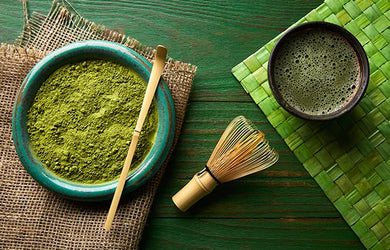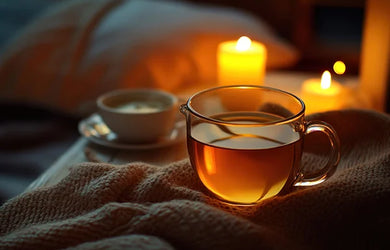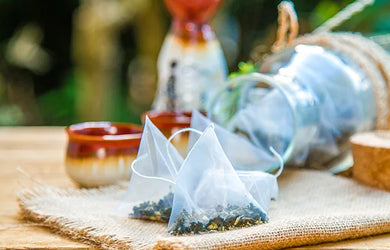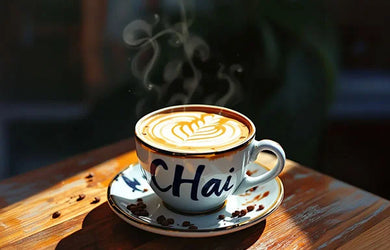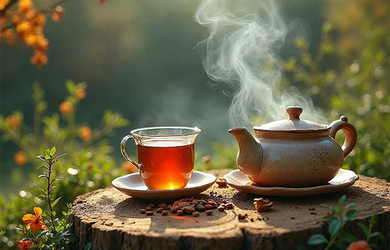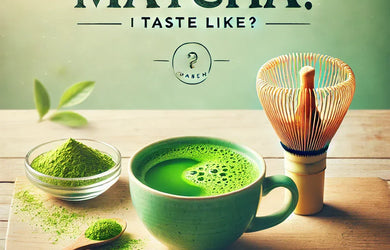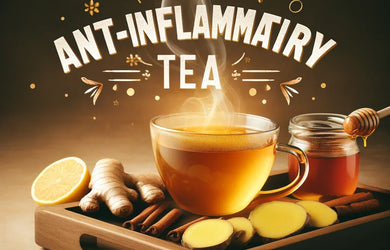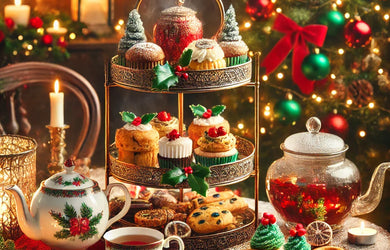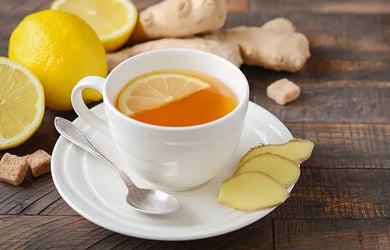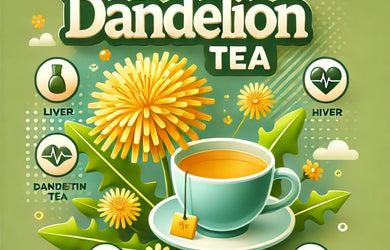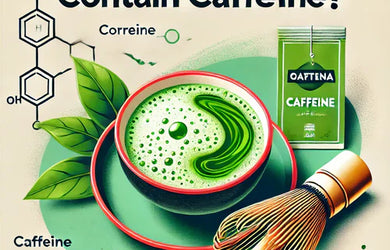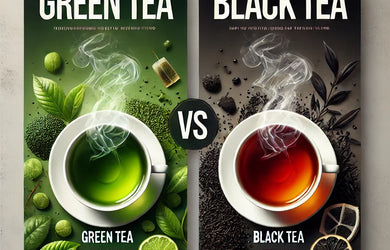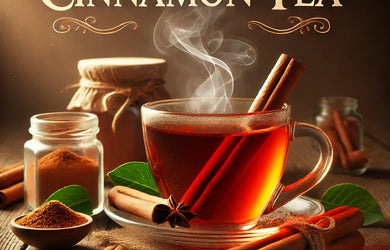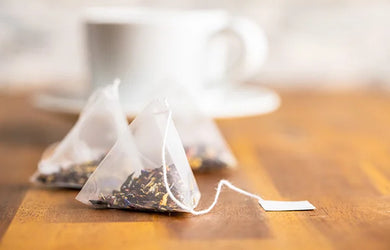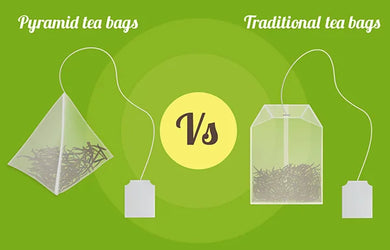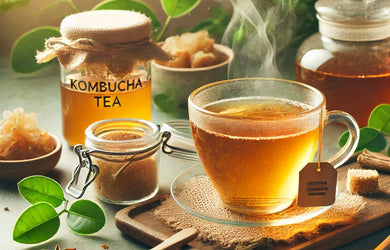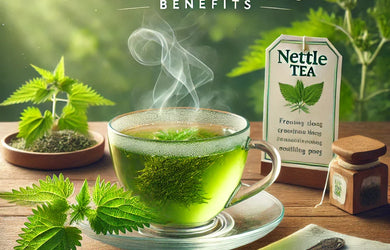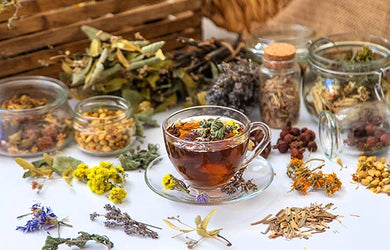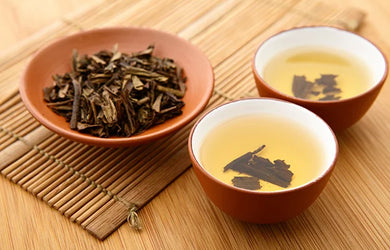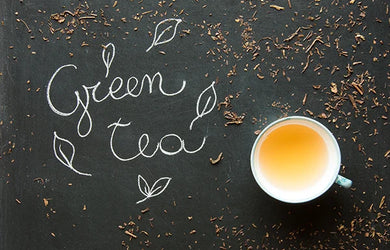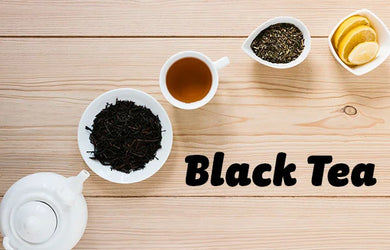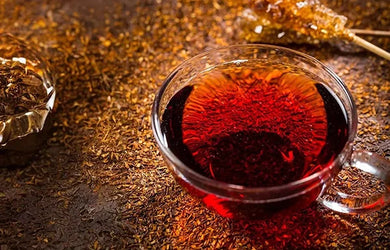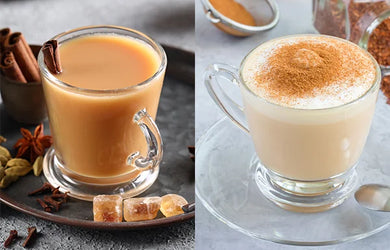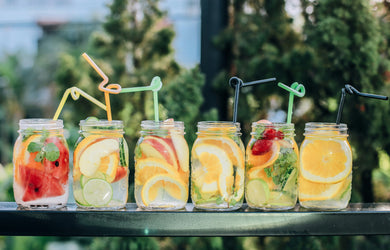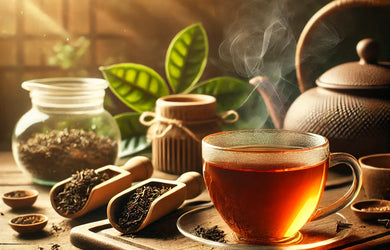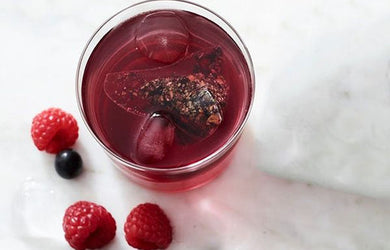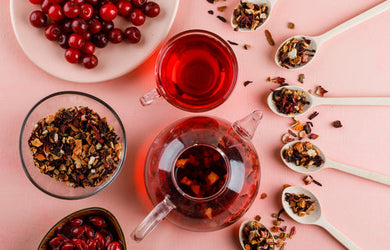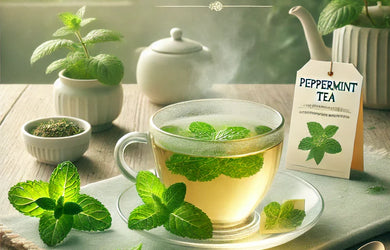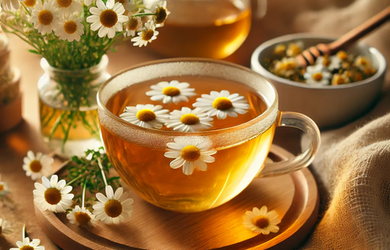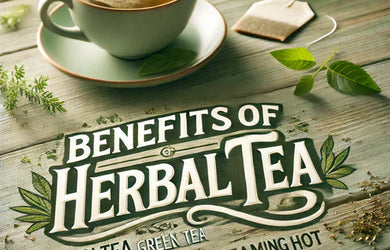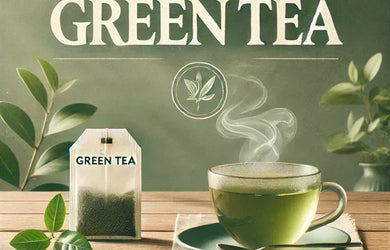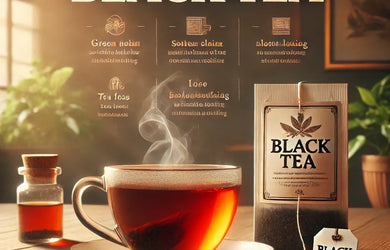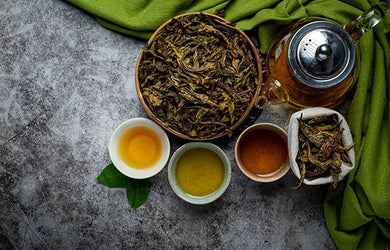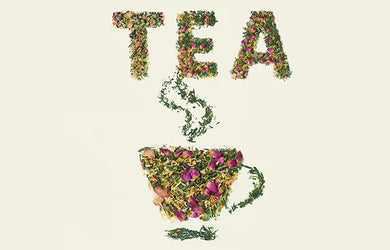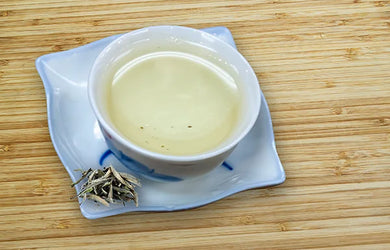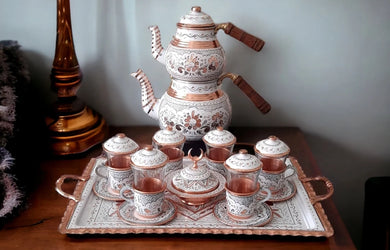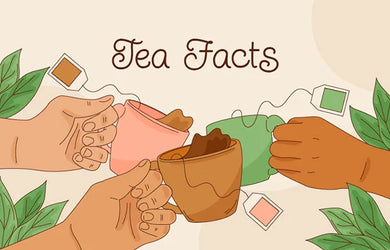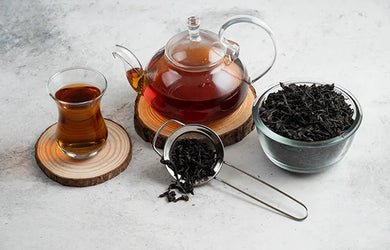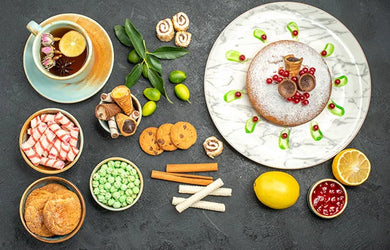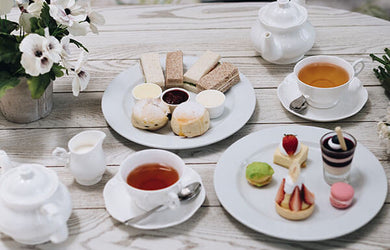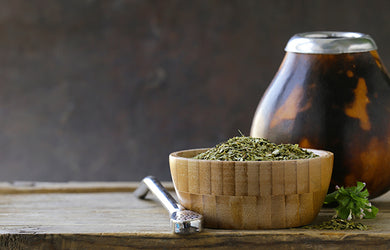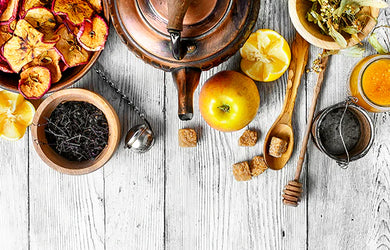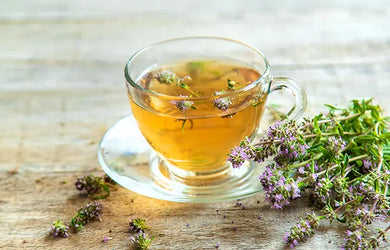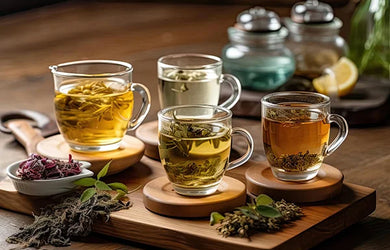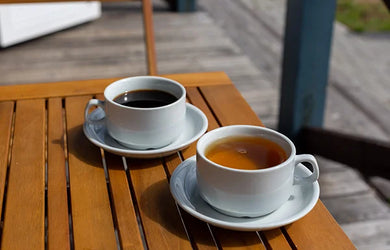people have been drinking tea for generations, but few take the time to discover the different types of teas available. there are thousands of varieties worldwide. some are well-known, such as green tea and black tea. others less common, like white tea and oolong.
understanding the main tea varieties makes it easier to explore the range and find the styles that suit your taste. if you’ve ever wondered how these types of tea differ, this simple guide brings everything into focus.

tea plant camellia sinensis: source of different types of teas
all well-known traditional teas come from a single plant called camellia sinensis. it’s an evergreen plant that can grow to impressive heights in the wild. however it’s kept low to make leaf picking easier, when cultivated for tea harvesting. the plant has been used for thousands of years, with its origins traced back to southern china.
there are two main varieties of camellia sinensis. camellia sinensis var. sinensis grows mainly in china and nearby regions. and it’s known for producing lighter and more delicate teas. camellia sinensis var. assamica, on the other hand, grows widely in india and usually produces stronger teas that are full-bodied.
green tea
green tea is one of the most widely enjoyed options around the world. it comes from the camellia sinensis plant, just like many other familiar tea varieties.
however, unlike other types of tea, these leaves don’t go through oxidation. and that’s the reason behind their natural profile. all though all green teas are unoxidised, regional growing conditions produce a variety of unique tea varieties.
mao feng green tea
mao feng is a premium variety from china, known for its young and tender buds. these buds are gathered by hand to protect their shape and freshness.
the leaves are thin and elegant, and they release a pale green infusion as they slowly unfurl in water. the infusion’s flavour is mild and refreshing, with subtle floral and fruity notes. however, it can taste different depending on where it’s grown.
the most famous mao feng tea varieties come from yellow mountain in anhui, but high-quality tea types are also grown in yunnan, fujian, zhejiang and beyond.
green mint tea
green mint tea is a simple mix of green tea and a herbal tea. it’s made by pairing unoxidised green leaves with fresh peppermint.
while different green bases can be used, chun mei is considered one of the better tea types for this blend. it’s sometimes called “precious eyebrows” because of the shape of its leaves. it’s also known for its mild fruity sweetness.
the blend produces a warm golden colour when brewed, and carries a bright and clean aroma. it has a soft fruity sweetness – that mild taste blends well with the edgy taste of mint.
black tea
everyday brew tea bags
inside these tea bags is a mix of select types of tea from assam, ceylon and rwanda. the leaves are picked with care to make sure the flavour is consistent every time you brew.
the blend of these tea types creates a satisfying taste – bold and rounded. one that works well whether you take it black or with milk and sugar.
it’s the kind of tea that appeals to many types of tea drinkers. warm and refreshing with a consistent taste, it’s a great choice for anyone who wants something simple and enjoyable every day.
darjeeling earl grey tea bags
darjeeling earl grey is one of those types of tea that instantly feels a bit livelier because of its citrus taste.
skilled pickers choose only two leaves and a bud to keep the flavour at its best. after processing the black tea leaves, they’re infused with bergamot oil for a clean citrus note. it adds a subtle layer of flavour while keeping the taste of tea prominent.
the bold darjeeling and bright bergamot work well together. the sharpness softens and creates an outstanding taste. you get that same balance in teapigs darjeeling earl grey tea – every time!
english breakfast tea bags
english breakfast tea is without doubt a preferred classic. there’s something comforting about its powerful taste. you can enjoy it any time of day, but it’s especially satisfying in the morning.
the blend uses 3 different types of tea leaves – from india, rwanda and sri lanka. these leaves are fully oxidised to give the tea a dark colour and a malty flavour. each region adds its own character, making a cup that’s bold but smooth.
chai tea
chai takes black tea and warm spices and turns them into something incredibly comforting. cinnamon, cardamom and ginger work perfectly with the strength of the tea. the mix creates a flavour that’s bold, smooth and delicious.
it’s one of the most significant tea varieties in india, that has countless regional versions. each one reflects how carefully people tune the spices to get the balance just right.
however, you don’t have to measure out spices every time – teapigs chai tea bags do the hard work for you. steep the tea, add milk and sugar if you like, and get yourself an outstanding drink with almost no effort.
yellow tea
yellow tea is one of the uncommon types of tea, known for its delicate taste and light colour. it starts as green tea but then takes it further with a unique step called “yellowing”, where the warm leaves are wrapped and left to oxidise slowly.
this process reduces the sharpness found in green tea and produces a smooth and mellow drink with a subtle sweetness. it’s a subtle yet distinct type of tea worth exploring.
purple tea
purple tea comes from a kenyan variety of camellia sinensis with leaves that naturally turn purple. this happens due to a genetic change that raises the level of anthocyanins. these antioxidants are the same ones found in berries, but purple tea has them in far higher amounts.
when you brew it, the tea tastes lightly earthy with a soft and appealing colour – something that sets it apart from most tea types.
pu-erh tea
pu-erh tea gets its name from pu’er in china, where this style has been made for centuries. it’s produced from large-leaf tea plants that are dried before going through a special fermentation stage.
that slow change is what gives pu-erh its deep and earthy character. the flavour keeps developing as it ages, which is why people often compare it to a collectible – the older it gets, the more interesting it becomes.
herbal tea
chamomile
this gentle tea is made from little chamomile flowers that give it a soft and soothing flavour. fun fact – “chamomile” is greek for “earth apple”.
there are two main types. german chamomile has larger petals and a taller yellow centre, while roman chamomile is smaller with a flatter disc. both make calming teas, but german chamomile is the preferred one.
that’s likely because it’s slightly sweeter and a bit stronger. its gentle fruity notes can even can evoke the flavour of apples.
peppermint
peppermint tea is as straightforward as it gets. it’s made from peppermint leaves – fresh or dried and that’s really all it needs to taste refreshing.
those leaves are packed with natural oils, especially menthol. and that gives us one of most refreshing types of tea with a cool and minty flavour.
people like this tea for more than just taste – it’s enjoyed for the soothing effect it has. ancient egyptians even included dried peppermint leaves in their tombs around 1000 bce.
hibiscus
this bright red herbal tea comes from hibiscus petals. it doesn’t just have visual appeal, its flavour is outstanding too. it’s tangy, slightly sour and wonderfully refreshing! it might even remind you of cranberry juice.
hibiscus tea started in africa, but is now popular around the world. and its colour and taste have definitely played a role in that. the fact that you can enjoy it hot, chilled or in cocktails adds to its popularity.
conclusion
so that’s a look at some of the most interesting tea varieties out there. while we’ve covered different types of tea – from classic green and black to unique varieties like purple and pu-erh tea – there’s so much more to explore in the tea world.
even within the herbal category, different types of teas have interesting flavours and experiences worth exploring.
each tea type offers unique flavours and aromas influenced by its plant variety, growing region and processing method. with so many different types of teas available, all teas offer something different. so there’s always something new to try. keep exploring and discovering how each one tastes and smells.
faqs on different types of teas
Q. What are the 6 main types of tea?
A. tea falls into two broad categories – traditional and herbal. the traditional ones all come from the camellia sinensis plant and cover the six main types – black, green, white, oolong, pu-erh and yellow. each type is processed differently, giving it a unique profile. while herbal infusions are also called teas, they aren’t the main ones.
Q. What are the 5 types of tea?
A. Tea comes in a range of varieties, each with its own flavour profile and style within the main categories. Some popular examples include:
- Black tea – English Breakfast, Darjeeling, Earl Grey, Everyday Brew
- Green tea – Mao Feng, Green Mint, Matcha
- White tea – Silver Needle, White Peony
- Oolong tea – Tieguanyin, Da Hong Pao
-
1. pu-erh tea – shou pu-erh, yunnan brick pu-erh
Q. What are the 10 best teas?
A. tea comes in all sorts of flavours and styles. ten popular varieties are english breakfast, darjeeling, earl grey, mao feng, green mint, matcha, silver needle, white peony, tieguanyin and da hong pao. each one has a little something different in profile, so there’s always a new taste to try.
Q. what are the top 10 best teas to drink?
A. the best teas really depend on what you like. green tea is fresh, black tea is strong, oolong is balanced, white tea is light and pu-erh is earthy. herbal teas are great too – chamomile is soothing, peppermint is minty, hibiscus is tart, ginger is warming and rooibos is sweet and red.
popular blogs
benefits of black tea | green tea benefits | herbal tea benefits | benefits of peppermint tea | benefits of chamomile tea | benefits of rooibos tea | benefits of raspberry leaf tea | benefits of oolong tea









